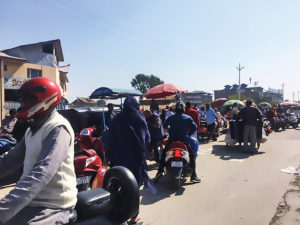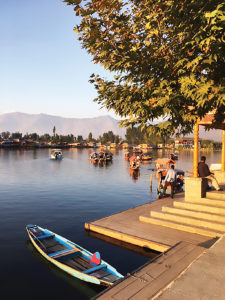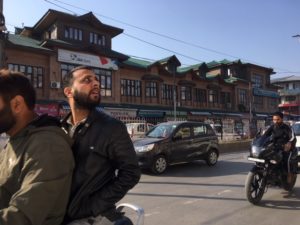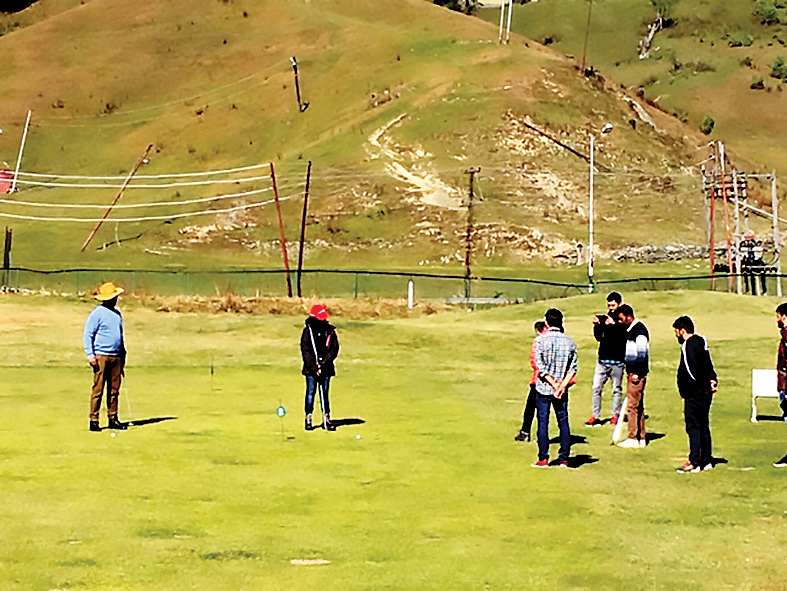Srinagar is learning to live with the new political reality. Their biggest worry is the prospect of outsiders buying property in the Valley
Kashmir is always a welcome change from Delhi. This time, exiting the airport felt like entering a war zone with the overwhelming presence of gun-toting security personnel. The first impression you get is that peace is an imposition here.
There were surprises in store. The city of Srinagar was functioning. Life is limping back to normalcy but then life has no other option. Two months of phones and Internet blockade pushed the Valley into medieval times but the human spirit finds a way to make the best of what is available. For me, it was a treat to be cut off from the outside world.

I was visiting a close relative who’s part of the security network. I was driven to his residence in Srinagar, late in the afternoon on a Friday when stone-pelting used to be customary in the old city before the miscreants were arrested en masse. An eerie silence prevails now in the old city, with odd cars passing by. It’s the most tense day of the week when both the locals and security forces expect something untoward: violence or a blast.
The day passed peacefully and the Valley grabbed the dark blanket with the setting of the sun, resting assured that another day has passed without bloodshed. A local fruit vendor near Lal Chowk was selling apples till late. His cryptic comment: “There little blood in the vein to shed.”
A tourist is welcome in Srinagar. He is seen as godsent, a harbinger of good times. Some 800 houseboats form a floating colony on the Dal Lake. They hardly bobble in the sedate water. The surface of the lake in the late hours converts into a blue mirror in which the image of the city, houseboats and green hills are reflected. It seems like heaven and earth are merging. Distilled beauty.
If there’s heaven on earth it’s still here, despite the prevailing situation. Perhaps that’s why locals come and sit by the lake, some fish, others walk, some just stare at Nature manifesting its beauty.
Srinagar, it has to be said, has become a cosmopolitan city for all the wrong reasons. The forces–CRPF, BSF and the army — have people from all over the country. New battalions posted here have many people from Southern India. And they dread the winters more than the Pakistan-sponsored insurgents. Like the locals, the troops, putting in long hours of vigil, miss the sights of their family, their city and their people.
Communication breakdown has resulted in an emotional breakdown — in some army and paramilitary camps, as rumours go, young men have suffered cardiac arrest. These are emotional causalities. “You always don’t need a bullet to kill,” says Tahir, a postgraduate in political science who lives in Delhi and is in the city to visit his family. He with his friends was out on the lake for a fishing expedition in a small boat.

They met us at the famous small island in the Dal Lake called the Char Chinar — named after four maple trees on this island. It is little larger than a hockey pitch, albeit circular in shape. On another small boat is housed a floating kitchen. Young Aamir made kahwa for us and offered us some chips. Char Minar is usually teeming with tourists, now it seemed like our private island. But the good news is tourists are coming, a cheap ticket is an incentive that overcomes the deterrent of the prevailing situation.
A 5-km uphill trek with my friend Alok took us to Shankaracharya temple. The last challenge to reach the temple is an arduous flight of stairs, 240 in all, and felt like taking stairs to the 30th floor of a skyscraper. The rarified atmosphere lackin oxygen pricks the lungs the most when you claim stairs. We met a family from Patna, some dozen people, that include kids and their mothers. The eldest gentleman, must be in his late thirties, asked all the children to shake hands with us, as if we have climbed Mount Everest.
The summit of this hill gives a bird’s-eye view of the city of Srinagar. The Jhelum crisscrosses the city, making circular loops, like a serpent trying moving on sand. Dal Lake look like a glossy glass floor. The blue sky with thick white clouds appear like Claude Monet’s paintings albeit with smoother brush strokes. You cease to experience your moral self and get merged with the scenery or become part of it. Regretfully, this is what they call one of the most dangerous places in the world.
The drive to Gulmarg takes extra three hours because it is crowded, especially the last 10-km ascent that takes you to the green flat hills of Gulmarg. Testing times have a silver lining. I was perhaps among the very few tourists to arrive there. The golf course is not in the best condition, wild weeds grow aplenty. But who is there to play golf?
The old gentleman at the Golf Club who served us steaming hot tea was glad to see us — tourists. He was happy we made it. He described how the green hills envelope a white blanket of snow during winters, making it an ideal venue for skiing. And for those who have witnessed both, like my co-traveller Alok, it is hard to decide which is better. “Winters are heavenly, and summers are colourfully divine,” he says. Sometimes the best choice to make is not to make a choice.
The busiest hours of the day in the Valley as far as locals are concerned is 7 to 11 in the morning when the shops open. After 11 shops have to be shut, dictate the insurgents. They don’t want people to get used to their old way of life in this new political reality. But as life has this indefatigable urge to get back to a certain routine, streets are abuzz with people, vendors, traders and fruit sellers. This is a pretty picture.
Not long ago, there was a traffic jam a few hours before a grenade was hurled by a suspected militant on Hari Singh High Street, injuring seven people. The target was not the security forces, but to scare traders who opened their shops beyond the prescribed hours.

Chemists are exempted from this rule, but shops operate throughout the day using the back door. That meant that I had the best of Kashmiri cuisine and ate twice as much as my stomach can take. An apple came to my rescue, an excellent aid to digestion. I also came across ‘Nag’ the local name of a juicy, sweet pear that’s slightly bigger than a lemon.
The locals’ biggest concern is that outsiders don’t end up buying property here. Kashmiris have no love lost either for politicians or for Hurriyat leaders locked up inside. “Kashmir is beautiful also because of its people,” says Aamir, who serves us kahwa near Char Chinar. “Who will come here if tourist become residents?” he drew the distinction.
Development will make lives better, but generally speaking, people are economically better off here than the rest of the country.
Traffic is fairly loud, and locals believing in the philosophy of “Me first” are good at blocking traffic. They are quick to pick a fight. I don’t know if this is a traditional trait or indication of latent anger amongst the local that feels like low dark clouds over the Valley.
On my way back, my co-passenger was the wife of an inspector in the BSF. She was returing with her three-year-old daughter after spending a month and a half with her husband. “It’s beautiful here,” she said, “as long as guns don’t fire.” Who would disagree?





